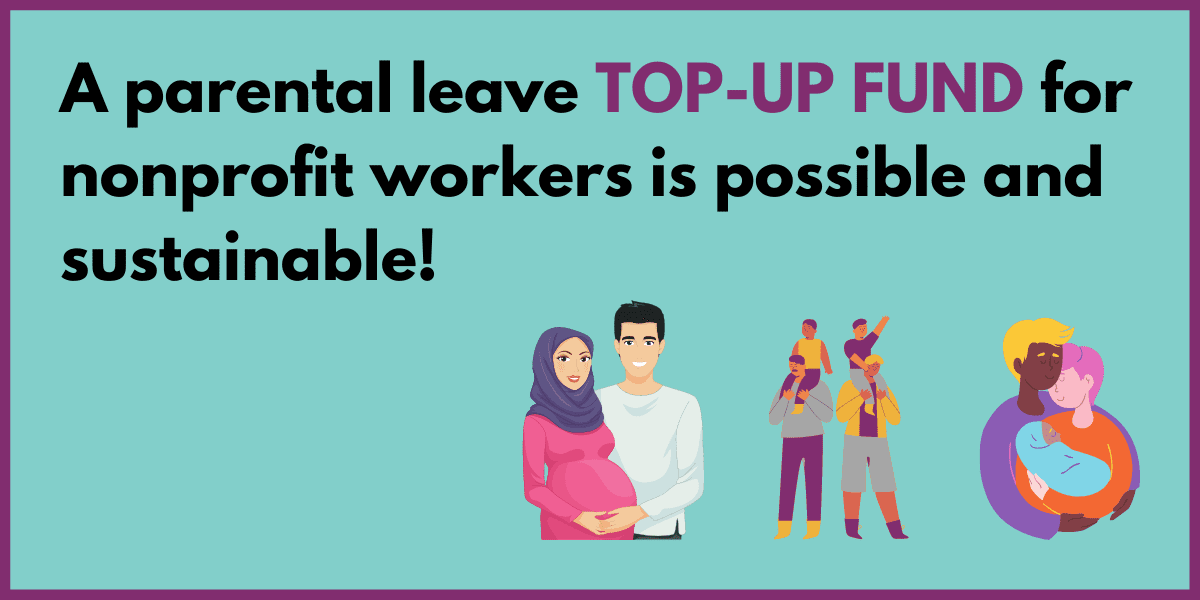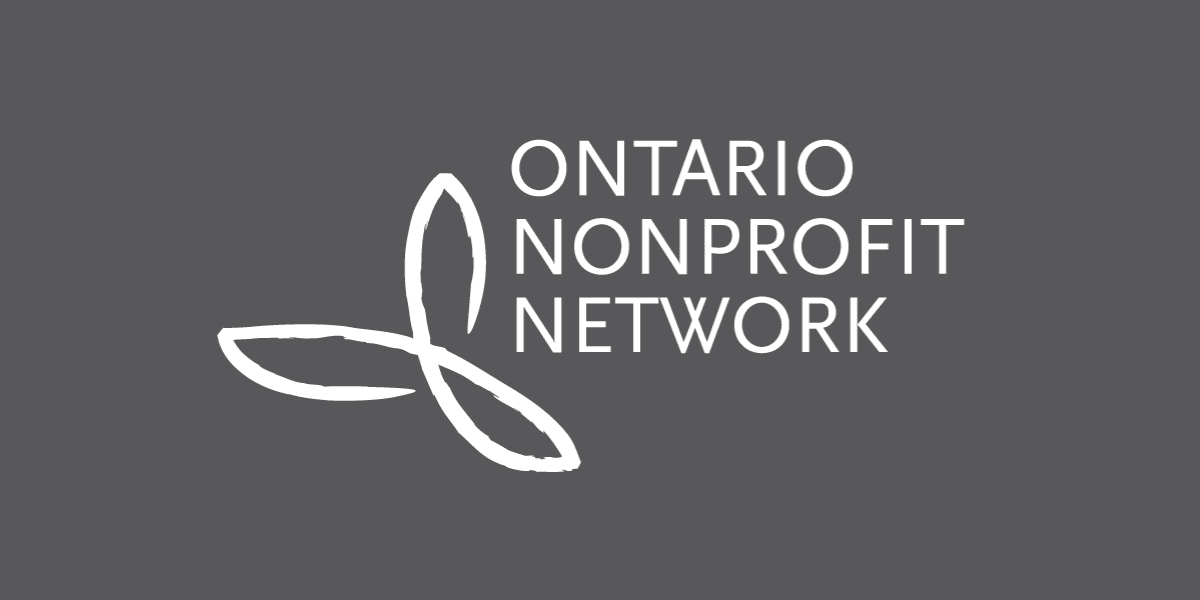
Blog
Pooling risk and resources can help build a parental leave top-up fund for nonprofit workers
We have heard loud and clear that women are facing a triple threat when it comes to fair wages in the nonprofit sector: the care penalty, a gender discount, and limited benefits. Wages in the sec tor are lower compared to other sectors, despite the fact that our workforce is highly educated and experienced. In addition, women earn less than men, especially in senior leadership positions and if they are non-white or have a disability. Lack of access to a pension plan, health benefits and maternity and parental leave benefits further drive down women’s overall compensation packages. Together, these add up to dramatically lower compensation for women working in the sector, over the course of their lives.
tor are lower compared to other sectors, despite the fact that our workforce is highly educated and experienced. In addition, women earn less than men, especially in senior leadership positions and if they are non-white or have a disability. Lack of access to a pension plan, health benefits and maternity and parental leave benefits further drive down women’s overall compensation packages. Together, these add up to dramatically lower compensation for women working in the sector, over the course of their lives.
A targeted solution for the most marginalized women workers
As part of ONN’s work to create decent work for women, we have thought deeply about all the points over the course of a woman’s life when her wages are negatively impacted (including both before and after entering the labour market). We have also considered how different parts of her identity, such as race and ability, factor into this. With this mapping in mind, we started brainstorming solutions to mitigate those moments and increase wages in the sector. Our goal was to have a systems-wide impact and so we developed and implemented solutions simultaneously at the organizational, network and policy levels. However, one issue kept sticking with us: women are experiencing a significant loss of income when they take maternity and parental leave and very few organizations in the sector are able to provide a top-up benefit to support. Not to mention that this leads to our sector losing talent to other sectors that can offer this benefit.
So, what is a “top-up” benefit? Two systems generally provide income to new parents: Maternity and Parental Leave benefits from Employment Insurance (EI) and employer “top-ups”. EI replaces 55 per cent of a worker’s income up to a maximum salary of $53,100. This means the maximum benefit for a worker is $562 per week, for up to 40 weeks (includes maternity leave, parental leave, and parental sharing benefits for the second parent). Workers can spread out their benefit amount over a longer period of time in the extended leave option. Those that have paid into the EI program and have worked 600 hours in the 52 weeks prior can qualify for benefits.
Employers have the option of supplementing workers’ EI maternity and parental leave benefits to reduce the difference between the EI benefits and the workers’ regular earnings. Top-ups are not considered extra earnings and therefore are not deducted from EI benefits, as long as they don’t exceed 100 per cent of weekly earnings when combined with EI benefits. The employer finances the top-up and chooses the rate and duration of eligibility. Some employers also offer a similar top-up to employees who do not qualify for EI.
Our ah-ha moment: Pooling risk + resources
While our initial reaction was to encourage organizations to individually implement a top-up policy, it did not seem like an effective and efficient way to get this benefit off the ground across the sector. Then we had an ah-ha moment: What if we pooled resources and risk in the sector for ONE top-up fund that everyone could access? It could function like an insurance or pension plan – we know that works from experience! And what if it also provided benefits to those who do not typically qualify for EI? The ideas started flowing to create a program that covered new parents of all genders, the most precarious workers, and yet was affordable for employers.
From the “what ifs”, we moved to gathering information by talking to key experts in the fields and then to researching the possibilities. The more we learned, the more we knew we were onto something. It was worth digging into further.
Top-up benefit = decent work
So what is our idea? It’s a sector-wide program where nonprofit employers pay premiums into a financial fund and as their employees take maternity and/or parental leave workers would get a top-up, which is a percentage of their earnings. The top-up would either be in addition to what the worker received from Employment Insurance (EI) benefits or can fill the gap for those who don’t qualify for EI. A pooled fund would spread the cost of a top-up program across participating organizations and smooth cash flow challenges related to unpredictable parental leaves. In this way it would be affordable for employers, while boosting decent work for workers.
A pooled top-up fund for the sector is both possible and sustainable
With a grant from the Community Foundations of Canada Investment Readiness Program, we hired consultants to crunch the numbers and run the scenarios with a market analysis, financial model, and business plan. A market analysis would tell us how much the sector was willing to pay for this type of benefit, a financial model would give us the cost of premiums, and a business plan would flag for us things we need to have in place to execute this idea.
We are excited to share that we have successfully completed this exploratory phase! Research and modelling has determined that a pooled fund is both POSSIBLE and SUSTAINABLE. We can pull resources together in a way that drives down the cost of top-up benefits for employers, and also provides good coverage for workers. The cost for employers can potentially be less than one per cent of their monthly payroll budget, which in turn can provide workers up to 30 per cent income replacement of the average weekly earnings (it would be up to 85 per cent for those who qualify for EI). The financial modelling also highlighted that we can do this without a waiting period or maximum insurable earnings threshold. Designed in this way, the fund could build a surplus over the years and remain sustainable.
Become an early adopter
Now, we are going to use this research and modelling to figure out how to make this pooled fund a reality. For workers, a top-up fund would mean income security during a major life event and for nonprofit employers, it would mean better recruitment and retention of employees while also lowering turnover costs. In our sector, it would propel us further into living our gender equity principles.
This would be a sector-driven solution we can do together to support and strengthen Ontario’s nonprofit workforce. ONN is eager to connect with early adopters. If you are interested in learning more and becoming an early adopter, contact us and download the one-pager to share. Pooled funds work better when a lot of people join.






